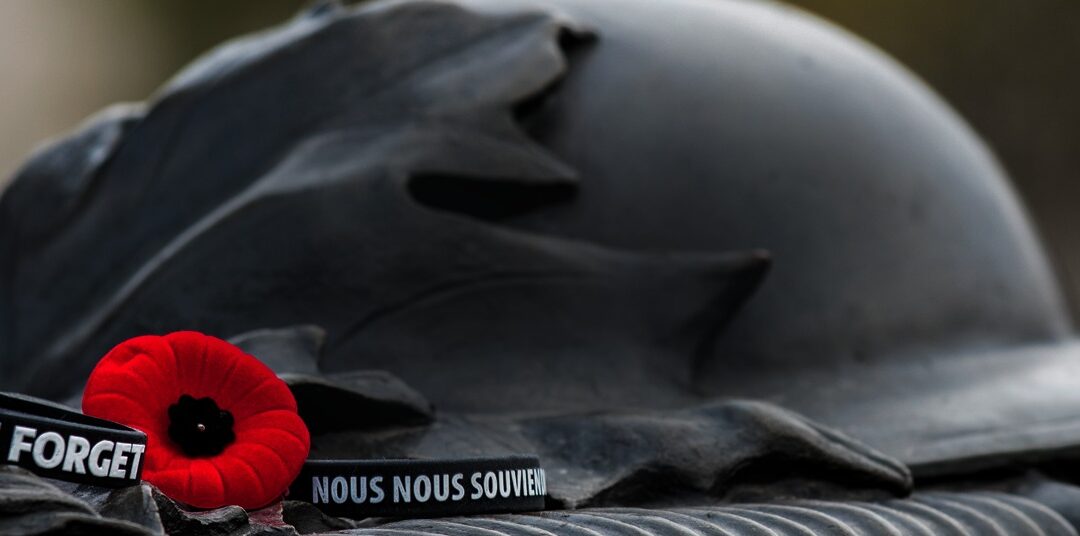By Carol Baldwin
Local Journalism Initiative Reporter
Wakaw Recorder
Since the War of 1812, Indigenous people have fought by the side of non-Indigenous people, despite the prejudice and discrimination they faced here in Canada. At war, they stood on a more equal footing, where their skills on the battlefield were more important than the colour of their skin. Veterans Affairs Canada estimates that more than 12,000 Indigenous people served during the First and Second World Wars and the Korean War. They voluntarily enlisted in an army to fight as a representative of a country that was actively attempting to erase them as a people, and it was not until 1994, with the establishment of National Indigenous Veterans Day, that there was public recognition of their service.
For decades before 1995, Indigenous veterans were not able to actively participate in Remembrance Day ceremonies as a group or lay wreaths, nor raise a glass at Canadian Legions to remember their fallen comrades. Inaugurated in Winnipeg in 1994, the National Indigenous Veterans Day recognized, at last, the sacrifices of a people who owed nothing to a country determined to remove them from its historical story. Despite initiatives being taken, Indigenous Veterans Day does not receive the same recognition as Remembrance Day in Canada. While November 11 is recognized as a public holiday, November 8 has yet to be granted a similar status.
On November 6th, ahead of the official day on November 8th, Métis Nation-Saskatchewan held a Remembrance ceremony at the National Veterans Monument at Batoche with invited Métis veterans, their families, Elders, and select guests. MN–S executives to pay homage to those who sacrificed. Shuttles ran between Dumont Lodge, where a pancake breakfast was held, and the Monument. The monument was first unveiled in July 2014, marking the achievement of its installation at Batoche. ‘While it is sad to acknowledge that thousands of Métis deserve the inscription, we are proud to honour and commemorate over 5,000 veterans with this first engraving on the monument,’ reads a statement on the Métis Museum website. (https://www.metismuseum.ca/metisveteransmonument/index.php)
Indigenous and Métis people continue to serve in the military, with close to 3000 members in the Canadian Armed Forces who fill a wide variety of roles, according to the federal government. Indigenous and Métis soldiers have continued to serve in deployments like Canada’s mission in Afghanistan from 2001 to 2014 and with the Canadian Rangers, a sub-component of the Canadian Army Reserve. This group of army reservists, active predominantly in the North, live and work as well on remote and isolated stretches of our east and west coasts. The Rangers use their intimate knowledge of the land to help maintain a national military presence in these difficult-to-reach areas, monitoring the coastlines and assisting in local rescue operations. The Canadian Rangers are divided into five Canadian Ranger Patrol Groups (CRPGs), each based in different remote, isolated and coastal communities across Canada. Their motto is ‘Vigilans,’ meaning ‘The Watchers.’ They provide lightly-equipped, self-sufficient mobile forces to support CAF national security and public safety operations within Canada. Not being regular Reservists, Canadian Rangers are never deployed into battle and remain within Canadian borders.
“With an intimate knowledge of the land, our Canadian Rangers act as the eyes and ears of the Canadian Army in Canada’s remote locations and are guides, advisors, and teachers to the rest of the Canadian Armed Forces, while providing Ground Search and Rescue services where required,” says the Government of Canada website.
The Canadian Rangers became part of the Canadian Army in October 2007, having previously been under the vice chief of the Defence Staff for the Canadian Armed Forces.
At the start of 2019, the Last Post Fund introduced the Indigenous Veterans Initiative (IVI) to commemorate and honour the memory of over 18,000 Indigenous Veterans, many of whom are thought to lie in unmarked graves. The initiative has two components: Indigenous Unmarked Graves provides grave markers to Indigenous Veterans deceased for over 5 years and lying in unmarked graves, and Indigenous Traditional Name Marking adds the traditional names of Indigenous Veterans to existing military grave markers. Both of these initiatives require research and community support from members of Indigenous communities throughout Canada. The Last Post Fund’s mission is to ensure that no Veteran is denied a dignified funeral and burial, as well as a military gravestone, due to insufficient funds at the time of death. The Last Post Fund is supported financially by Veterans Affairs Canada and by private donations. (https://www.lastpostfund.ca/)
If you think a family member or a member of your community may qualify for this program, or if you would like to contribute to the community research effort, please contact Maria Trujillo, Indigenous Program Coordinator at mtrujillo@lastpost.ca
